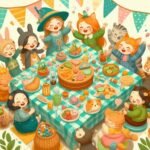Game art production is a complex and multifaceted process that presents numerous challenges and obstacles to artists and developers. From technical constraints and creative limitations to tight deadlines and budgetary constraints, game art production requires a combination of technical skill, creative ingenuity, and problem-solving ability. In this article, we explore the technical triumphs of game art production, examining the challenges faced by artists and developers and the innovative solutions that enable them to overcome obstacles and deliver exceptional gaming experiences.
Navigating Technical Challenges in Game Art
Technical challenges are an inherent part of game art production, requiring artists and developers to push the boundaries of technology and creativity to achieve their artistic vision. By embracing these challenges and finding innovative solutions, game artists can create stunning visuals, immersive environments, and engaging characters that captivate players and elevate the gaming experience to new heights.

Optimization and Performance
Managing Resource Constraints
One of the primary technical challenges in game art production is optimizing assets for performance while maintaining visual fidelity. Game artists must balance the need for high-quality visuals with the limitations of hardware capabilities, ensuring that games run smoothly on a variety of devices and platforms. This involves optimizing asset size, texture resolution, and polygon count, as well as implementing efficient rendering techniques and compression algorithms to minimize file size and maximize performance.
Level of Detail (LOD) Systems
Level of detail (LOD) systems are a common solution for managing resource constraints in game art production. LOD systems dynamically adjust the level of detail of game assets based on their distance from the camera, reducing the complexity of models and textures to improve performance without sacrificing visual quality. By implementing LOD systems, game artists can optimize rendering performance and maintain consistent frame rates across different hardware configurations, ensuring a smooth and immersive gaming experience for players.
Cross-Platform Compatibility
Developing for Multiple Platforms
Another technical challenge in game art production is ensuring cross-platform compatibility, as games are often developed for multiple devices and platforms with varying hardware specifications and capabilities. Game artists must create assets that perform well and look great on a wide range of devices, including consoles, PCs, mobile devices, and virtual reality platforms. This requires optimizing assets for different screen resolutions, aspect ratios, and input methods, as well as testing and debugging for platform-specific issues.
Scalable Asset Pipelines
Scalable asset pipelines are essential for streamlining the production process and ensuring cross-platform compatibility in game art production. By implementing modular workflows and scalable tools, game artists can create assets that are easily adaptable to different platforms and hardware configurations. This allows for efficient asset creation, management, and deployment across multiple platforms, minimizing development time and resources while maximizing reach and accessibility for players.
Real-Time Rendering and Visual Effects
Pushing the Limits of Real-Time Rendering
Real-time rendering is a cornerstone of modern game art production, enabling artists to create immersive and visually stunning environments that react in real-time to player interactions. However, pushing the limits of real-time rendering requires overcoming technical challenges such as rendering complexity, lighting simulation, and physics simulation. Game artists must leverage advanced rendering techniques and optimization strategies to achieve high levels of visual fidelity and realism while maintaining consistent performance across different hardware configurations.
Dynamic Lighting and Particle Effects
Dynamic lighting and particle effects are powerful tools for enhancing immersion and atmosphere in game art production, but they also present technical challenges in terms of performance and optimization. Game artists must balance the visual impact of dynamic lighting and particle effects with their computational cost, ensuring that they contribute to the overall aesthetic without sacrificing performance. This involves optimizing shader code, limiting the number of active light sources and particles, and implementing efficient culling and batching techniques to minimize rendering overhead.










